
Aerotropolis
by
John D. Kasarda
and
Greg Lindsay
Published 2 Jan 2009
Melvin Webber’s concept of “community without propinquity” is best explained in his essay “Order in Diversity: Community Without Propinquity,” which was collected in Cities and Space: The Future Use of Urban Space. His quotation is lifted from the same. Marchetti’s Constant is derived from Cesare Marchetti’s paper “Anthropological Invariants in Travel Behavior” (Technological Forecasting and Social Change, vol. 47, 1994). His maglev thought experiment appears in “The Evolution of Transport,” by Jesse H. Ausubel and Cesare Marchetti (Industrial Physicist, April/May 2001). The Future Forum report was published by the British travel firm Thomson in 2006. The University of California sociologist Claude Fischer wrote about Americans’ itinerancy (or increasing lack thereof) in “Ever More Rooted Americans” (City & Community, June 2002).
…
When he finished Peachtree Center in 1976, the result was a hermetically sealed “Center” central to nothing except its clones elsewhere. He had built the urban equivalent of a hub, profitable and infinitely repeatable anywhere. And with that, his LEGO-block approach became the reigning vernacular in Airworld’s peculiar geography of nowhere. Kasarda’s Law and Marchetti’s Constant It wasn’t supposed to be this way. Technology was going to ground us by linking and shrinking the world, and in doing so set us free. The world would flatten. Road warriors would beat their platinum medallions into plowshares. It hasn’t happened. For twenty years, we’ve heard how e-mail and videoconferencing— relabeled “telepresence”—would eliminate the need for cross-country meetings.
…
But as horse trams came along, followed by electric trams, then subways, and finally cars, the city’s periphery raced away from its Enlightenment-era core. Berlin’s diameter was effectively ten times wider in 1950 than it was 150 years earlier, yet it still took only an hour to traverse. The rule has since been dubbed Marchetti’s Constant. Marchetti contended that transportation, not communications, was the “unifying principle of the world.” Ratifying Kasarda’s Law, he attested that the “so-called explosion in communication during the last 20 years did not dent transportation expansion; on the other hand, they tend to move together.”
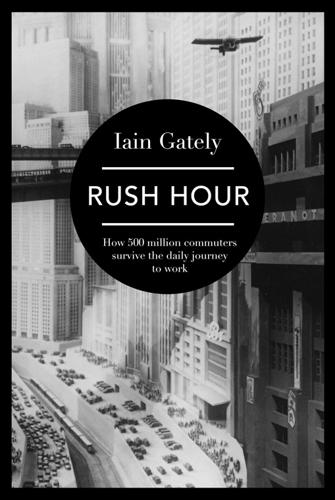
Rush Hour: How 500 Million Commuters Survive the Daily Journey to Work
by
Iain Gately
Published 6 Nov 2014
Although they work shorter hours, they spend an hour or so each day on the hoof – or about the same as the average OECD commuter. The similarity in daily travel time between such radically different lifestyles inspired Cesare Marchetti, the Venetian theoretical physicist, to suggest that there was a ‘quintessential unity of travelling instincts around the world’ and that this unity resulted in a fixed ‘travel time budget’ that he named after himself as Marchetti’s Constant. He tested his theory against a variety of cultures past and present and decided that it has shaped our behaviour since the dawn of history. The territory associated with ancient Greek villages, for instance, whose inhabitants went about on foot, was about twenty square kilometres, which was about as much as they could manage within their travel time budget, and this pedestrian limit continued to restrict the size of towns and settlements until the Industrial Revolution.
…
Although the French government promised to spend 400 million euros on upgrading the network in 2013, this was still less than half the sum budgeted for TGV lines. It may be, however, that HS2 and its continental equivalents aren’t being ambitious enough. If displacing aeroplanes is the aim, then why not build an elevated Maglev, such as was imagined by Cesare Marchetti in 1994, running from the Channel tunnel to Aberdeen? It’s only 438 miles, which a Maglev travelling at conservative speeds, and stopping at London Heathrow, Birmingham, Manchester and Edinburgh en route, could manage within an hour. With a few feeder lines it might extend the ‘commuter-shed’ of all these places for dozens of miles in every direction.
…
A Fixed-Effects Analysis of Panel Data’, Psychological Science, published online 23 April 2013, DOI:10.1177/ 0956797612464659. 229 For ‘Stall Luft’, see: http://metro.co.uk/2011/03/ 04/cow-fart-cans-offers-authentic-smell-of-countryside-642451/. 230 ‘free up sufficient equity to fund’, Sophie Chick, Savills, ‘Value in the commuter zone’, 19 February 2013: http://www.savills.co.uk/research_articles/141560/144657-0. See also Insights, Commuting Trends Review, Autumn 2010, Blue Door Media Ltd., for Savills. 231 ‘quintessential unity of travelling instincts around the world’, Cesare Marchetti, ‘Anthropological Invariants in Travel Behaviour’, Technological Forecasting and Social Change, vol. 47, no. 1, 1994, p. 88. 232 For the Hadza tribe of Tanzania, see Michael Finkel, ‘The Hadza’, National Geographic magazine, December 2009. http://ngm.national geographic.com/print/2009/ 12/hadza/ finkel-text. 234 For ‘it’s worth it to me to come home’, Dave Givens talking to Andrea Seabrook of NPR, 14 June 2008, see: http://seattletimes.com/html/nationworld/2002970862_commute04.html. 234 For ‘better option’, see: http://www.bbc.co.uk/news/magazine-25551393. 236 For ‘more than half of America’s schoolchildren’, see: http://www.americanschool buscouncil.org/issues/environmental-benefits.
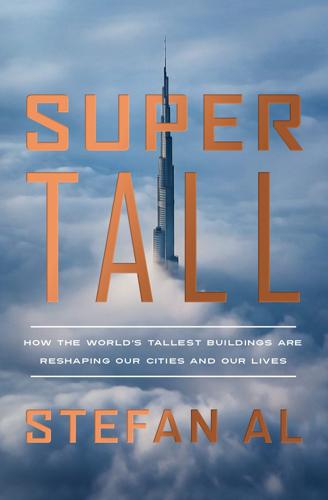
Supertall: How the World's Tallest Buildings Are Reshaping Our Cities and Our Lives
by
Stefan Al
Published 11 Apr 2022
With autonomous vehicles, hyperloops, and aerial ridesharing in the near future, we may be up for a wild ride! Plus, along with it, land that was previously less desirable will become the development hot spots of tomorrow. New mobility systems will change our cities and buildings once again. In 1994, Italian physicist Cesare Marchetti described a principle, now known as “Marchetti’s constant.” He found that, in general, people are willing to commute for about one hour a day, or a half-hour one way. Since Neolithic times, people kept the average time spent for travel the same, even when transportation advances allowed them to increase their distance. This idea has had far-reaching effects on our cities.
…
This may lead to the explosive growth of metropolitan areas. You could commute from your office in downtown Los Angeles to Las Vegas, where prices are lower, and live in a bigger home. The race will be on for the first hyperloop-integrated skyscraper. Autonomous vehicles (AVs) could desensitize people to distance, possibly lengthening Marchetti’s “constant” of commuting time. Without having to attend to the wheel, you can now sleep in your car, or conduct online meetings there. Perhaps you can live a little farther away and buy a cheaper home? In other words, cities will increasingly sprawl out. The increase of telecommuting, accelerated by COVID-19, may have a similar impact.
…
While hyperloops are faster, they probably won’t come close to the transport efficiency of the good old subway. Hyperloops can carry 3,360 passengers an hour.29 A single subway can carry more than ten times as many people. (While it might not carry as many people, a hyperloop’s higher speeds would prevent people from otherwise taking a more carbon-intensive ride.) If Marchetti’s constant continues to hold, building new developments around faster forms of mobility may further encroach on untouched land, destroying habitats and threatening ecosystems. But there is another option. Access is a function of proximity and mobility. Instead of focusing on new mobility, we can increase access with proximity, by more densely packing activities or with a larger variety of uses.
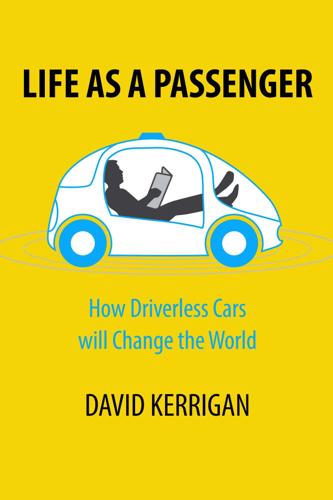
Life as a Passenger: How Driverless Cars Will Change the World
by
David Kerrigan
Published 18 Jun 2017
The lack of road safety also costs up to 5 percent of countries’ GDP, mostly affecting the poorest ones.[316] Most developing countries are still far from being as car-centric as the developed world. City travel is still mostly composed of walking, bicycling and public transport, much more in line with Marchetti’s constant. It is probably preferable if these cities do not replicate the urban mistakes of others, as to multiply them on the scale of Mexico City or Rio would not be feasible. The driverless car might help save developing countries from ever having to replicate the car-centric infrastructure that has emerged in most western cities.
…
Going against the theory is the UK Department for Transport, which predicts that road traffic in the United Kingdom will grow by between 19 and 55% by 2040.[61] In a study examining urban car use, Jeff Kenworthy, a professor of sustainability at Curtin University in Australia, found that the pace at which people increase their use of cars has been slowing. It may be explained, at least in part, by a concept known as the "Marchetti Wall."[62] Back in 1994, the Italian physicist Cesare Marchetti observed that throughout history—going back to ancient Rome—the majority of people disliked commuting more than one hour to work. If you're faced with a longer commute, you hit the Wall and rearrange your life, finding a new, more local job or moving closer to the office. In the 1990s and early 2000s, not only did use of public transit grow, but Kenworthy found that cities worldwide were becoming denser, in part because millennials weren't decamping for the suburbs (like their boomer parents did), and because seniors were moving back to urban cores, to enjoy the walkable life.[63] The advent of driverless cars may be the biggest challenge to the strength of the Marchetti wall yet.
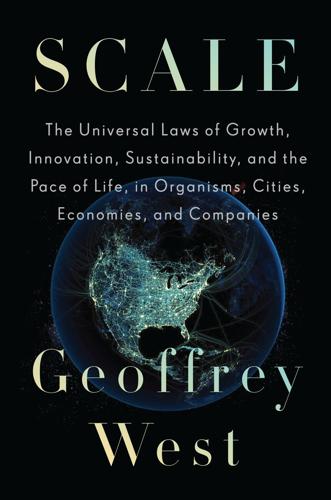
Scale: The Universal Laws of Growth, Innovation, Sustainability, and the Pace of Life in Organisms, Cities, Economies, and Companies
by
Geoffrey West
Published 15 May 2017
This surprising observation of the approximately one-hour invariant that communal human beings have spent traveling each day, whether they lived in ancient Rome, a medieval town, a Greek village, or twentieth-century New York, has become known as Marchetti’s constant, even though it was originally discovered by Zahavi. As a rough guide it clearly has important implications for the design and structure of cities. As planners begin to design green carless communities and as more cities ban automobiles from their centers, understanding and implementing the implied constraints of Marchetti’s constant becomes an important consideration for maintaining the functionality of the city. 4. THE INCREASING PACE OF WALKING Zahavi and Marchetti presumed that for a given mode of transportation, such as walking or driving, travel speed did not change with city size.
…
., 48–49 life expectancy (life span), 6, 11–12, 183–94, 457n estimated gain in, if given disease was cured, 193, 193–94 human mortality curve, 189–90, 192, 192–94, 193 human survivorship curves, 189–94, 191, 192 maximum, 6, 24, 188–94, 202–3 temperature dependence of, 175, 176, 177, 203–4 life extension, 6, 183–94, 203–7 body temperature and, 203–4 caloric restriction and, 205–7, 206 heartbeats and pace of life, 204–5 Limehouse (London), 224–26 Limits to Growth, The (Meadows), 231–32 linear thinking, 17–18, 44–45, 72, 157 links and social networks, 297–98, 298, 319–20 Liverpool, walking lanes, 335–36, 336 Living Earth Simulator, 271 Lobo, José, 274–75, 356, 364, 386 logarithms, 26, 47–48, 49 London, 222–26, 267–68 garden cities, 255 growth curve, 376 Longevity Prize, 184 Los Alamos National Laboratory, 83–84, 106, 274, 405, 434, 435 Los Angeles, 17–18, 251, 310 growth curve, 377 infrastructure networks, 252 Lösch, August, 290 Lower Manhattan Expressway, 260 LSD, 52–54 MacBook Air, 439, 445 machine learning, 443–44 macroecology, 105 magic number four, 6, 117 self-similarity and origin of, 126–30 universality and, 93–99 maintenance expenses, 391–93 Malthus, Thomas Robert, 227–30, 287, 414–15, 416, 423 Malthusians, 227–30, 414–15 mammals. See animals Manchester, England, 223–24 Mandelbrot, Benoit, 130–31, 132, 138–45, 152, 364 Mandelbrot set, 143–44 manufacturing, 211 Marchetti, Cesare, 333–35 Marchetti’s constant, 334–35 market capitalization, 379, 389–90 market share, 408–9 Marx, Karl, 228, 332 Masdar (Abu Dhabi), 256, 258, 299 Mathematical Principles of Natural Philosophy (Newton), 181 mathematics, 8 biology and, 85–86, 87 Euclidean geometry, 130–31, 141–42 matryoshka, 128 maximal Krogh radius, 160 maximum life span, 6, 188–94, 202–3 maximum size of animals, 158–63 Maxwell, James Clerk, 109, 115, 428 McCarthy, Cormac, 425 McKinsey & Company, 404, 405 McMahon, Thomas, 198 Mead, Margaret, 239 Meadows, Dennis, 231–32 measurement process, 135–41 mechanical constraints, 122, 158–63 mechanistic theory, 12, 85, 111–12, 144, 145, 182, 408 Medawar, Peter, 86 medical research, 52–55 Medical Research Council Unit (MRCU), 437 medicine, scaling in, 16, 51–57 megacities, 7, 215, 223–24, 267–68 Meier, Paul, 403 mergers and acquisitions, 33, 403–4 survivorship curves, 396–97, 399 metabolic energy emergent laws and hierarchy of life, 99–103 growth and, 165–66 metabolic rate, 13, 18–19, 124–26, 201, 234 of animals, 2, 2n, 3, 13, 18–19, 25–26, 91–92, 285–86 of average human, 88–89 of bacteria and cells, 93, 94, 96 of companies, 391–92 definition of, 13 Kleiber’s law and, 26–27, 90–93, 117, 145 in mammals, plants, and trees, 18–19, 118–22 natural selection and, 88–90, 151 scaling of, 90–91, 173 metabolic theory of ecology (MTE), 115–16, 173–78, 203–4 metabolism of cities, 371–78 energy, and entropy, 12–15 social, 13, 373–74, 415 Metabolism (architecture), 247–48 metaphysics, 179–80 Metropolitan Statistical Areas (MSAs), 356, 462n Mexico City, growth curve, 375 mice, 6, 12, 16, 52, 114 caloric restriction and survival curves, 205, 206 Milgram, Stanley, 296–97, 301–4 Milgram experiment, 301–2 Milky Way, 79 Millennium Bridge (London), 298–300 minimum size of animals, 155–58 mitochondria, 100–102, 101, 113 mobile phone data, as detector of human behavior, 337–45, 351–52, 439 modeling, 62–63 modeling theory, 35, 71–75 Modena, Italy, 249 momentum, 20–21 Moore, James, 249 mortality.
…
The conclusion is clear: the size of cities has to some degree been determined by the efficiency of their transportation systems for delivering people to their workplaces in not much more than half an hour’s time. Zahavi’s fascinating observations made a powerful impression on the Italian physicist Cesare Marchetti, who was a senior scientist at the International Institute for Applied Systems Analysis (IIASA) in Vienna. IIASA has been a major player in questions of global climate change, environmental impact, and economic sustainability, and this is where Marchetti’s interests and contributions have mostly been.
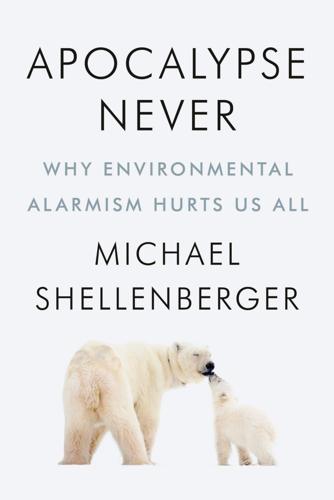
Apocalypse Never: Why Environmental Alarmism Hurts Us All
by
Michael Shellenberger
Published 28 Jun 2020
Pry, “A Simple Substitution Model of Technological Change,” Technological Forecasting and Social Change 3 (1971–72): 75–88, https://doi.org/10.1016/S0040-1625(71)80005-7. 41. Cesare Marchetti, “A Personal Memoir: From Terawatts to Witches,” Technological Forecasting and Social Change 37, no. 4 (1990): 409–414, https://doi.org/10.1016/0040-1625(90)90049-2. 42. Ibid. 43. C. Marchetti and N. Nakićenović, The Dynamics of Energy Systems and the Logistic Substitution Model, International Institute for Applied Systems Analysis, December 1979, http://pure.iiasa.ac.at/id/eprint/1024/1/RR-79-013.pdf. 44. Marchetti, “A Personal Memoir: From Terawatts to Witches.” 45. Cesare Marchetti, “Primary Energy Substitution Models: On the Interaction Between Energy and Society,” Technological Forecasting and Social Change 10, no. 4 (1977): 345–56, https://doi.org/10.1016/0040-1625(77)90031-2. 46.
…
Nations harvest fewer than two thousand whales annually, an amount that is 97 percent less than the nearly seventy-five thousand whales killed in 1960.38 The moral of the story, for the economists who studied how vegetable oil saved the whales, was that, “to some extent, economies can ‘outgrow’ severe environmental exploitation.”39 4. A System Without a Schedule While consulting for General Electric in the early 1970s, a playful, forty-something-year-old Italian nuclear physicist named Cesare Marchetti became friendly with one of GE’s in-house economists. The man had recently coauthored a paper, “A Simple Substitution Model of Technological Change.”40 The model calculated how quickly new products become suitable replacements for older ones in order to predict how quickly new products would saturate the market.
…
“But there’s nothing in this fish that would last more than a single generation because of its low fitness.”92 As for Trader Joe’s and Whole Foods, former AquaBounty CEO Ron Stotish was optimistic that he could change their minds. “We are hopeful that over time, they will embrace our product.”93 But five years later, neither the environmental groups supposedly worried about the future of wild fish, nor Trader Joe’s, Whole Foods, Costco, Kroger, and Target, had changed their minds.94 8. Class War Today, Cesare Marchetti is in his early nineties and lives as a “gentleman farmer near Florence,” says his friend and coauthor, Jesse Ausubel, “with olive groves, grapevines, goats, black cats,” and his typewriter collection.95 Ausubel, who works at Woods Hole Research Institute and Rockefeller University, has been friends with Marchetti since they met in the 1970s at IIASA.
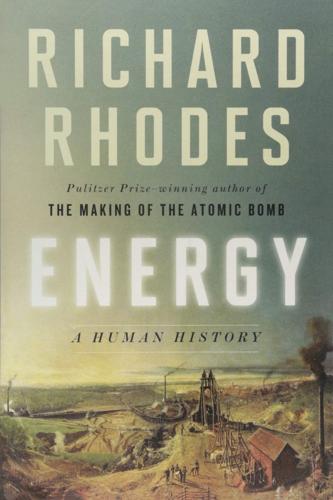
Energy: A Human History
by
Richard Rhodes
Published 28 May 2018
Walker, Three Mile Island: A Nuclear Crisis in Historical Perspective (Berkeley: University of California Press, 2004), 204–8. 15. Fukushima accident: “Fukushima Accident,” World Nuclear Association Information Library (online). 16. Anil Markandya and Paul Wilkinson, “Electricity Generation and Health,” Lancet 370 (2007): 982. 17. Cesare Marchetti, “My CV as a Personal Story,” Cesare Marchetti Web Archive online, 2003, 4–5. 18. Cesare Marchetti and N. Nakicenovic, “The Dynamics of Energy Systems and the Logistic Substitution Model,” pt. 1, pt. 2, RR-79-13, IIASA, 1979, 1 (online). Italics in original. 19. Luis de Sousa, “Marchetti’s Curves,” The Oil Drum: Europe, 2007 (online). 20.
…
As a harbinger of what’s coming, the Iranian city of Bandar Mahshar suffered a heat index—a measure of temperature and humidity combined—of 165°F (74°C) in August 2015. Temperatures in the Middle East in recent years have frequently exceeded 125°F. Energy: A Human History originated in my encountering the work of an Italian physicist named Cesare Marchetti. Born in 1927, Marchetti has been based for many years at an institute in Laxenburg, Austria, outside Vienna—IIASA, the International Institute for Applied Systems Analysis. IIASA is one productive outcome of the ill-fated Club of Rome, founded in 1968 as a loose organization of European business leaders, scientists, and high-level government officials concerned (again) with overpopulation and resource depletion.
…
Many more are proposed.22 These developments reflect the increasing economic expansion toward prosperity of the most populous nations in the world, which have been choking on their fossil-fuel pollution much as Europe and the United States choked on their pollution a hundred years ago. The prosperous West can—barely—afford to produce all its power with renewables if it decides to do so. The rest of the world doesn’t have that option. Cesare Marchetti’s graph, assuming its vectors unfreeze themselves as conditions change, predicts a future energy supply dominated by nuclear and natural gas. We will need all that and renewables as well to sustain a world population of ten billion in anything like reasonable prosperity. The boats are lining up.
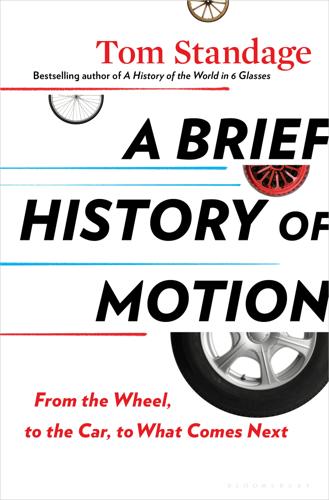
A Brief History of Motion: From the Wheel, to the Car, to What Comes Next
by
Tom Standage
Published 16 Aug 2021
These could travel at 12 mph or even 15 mph, extending the half-hour commuting distance from three to at least six miles, and once again hugely increasing the potential residential area around a city as streetcar lines were run to new developments. More people had more choice about where to live. This half-hour commuting distance may sound arbitrary, but an analysis of urban layouts by Cesare Marchetti, an Italian physicist, suggests that one hour is, on average, how long people are willing to spend traveling to and from work each day and has been for centuries. (Some people’s commutes are much shorter or longer; this is an average across a whole city’s population.) Marchetti suggested that this time limit defined the size of cities.
…
According to an analysis published in 2016 by Shlomo Angel, an urban-studies expert at New York University, 75 percent of jobs in a typical American city are now outside the urban center. That means commuters mostly spend their time driving from one suburb to another, rather than in and out of the city center. (The average time spent driving to and from work, as predicted by Cesare Marchetti, remains at thirty minutes.) Modern suburbia may not be the world promised by Futurama, with fast-flowing highways transporting commuters between downtown jobs and leafy suburbs—“healthy uplands between forest and stream,” as Bel Geddes put it. But it is the world that most Americans, and an increasing proportion of people elsewhere, now live in.
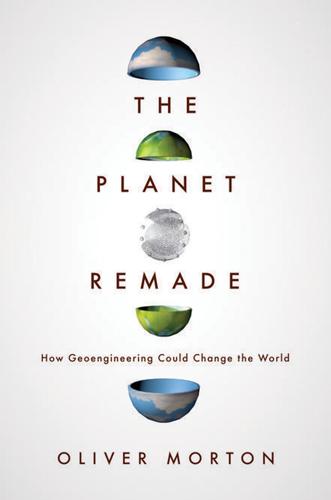
The Planet Remade: How Geoengineering Could Change the World
by
Oliver Morton
Published 26 Sep 2015
Roger Revelle, the man who had first drawn attention to the ‘geophysical experiment’ of increasing carbon-dioxide levels, included a mention of the effects that experiment was expected to have on the climate in a 1965 report on environmental pollution drafted for President Johnson – the first greenhouse-warming alert ever presented to a head of state. But Revelle made no suggestion that carbon-dioxide emissions should be reduced as a way of dealing with the problem. Instead he described a technical fix – floating ping-pong balls on the surface of the ocean to make it more reflective. A decade later an Italian physicist, Cesare Marchetti, outlined a scheme in which much of the world’s industrial carbon dioxide would be piped directly from power plants to the ocean depths, rather than released into the atmosphere. Under the pressures of the abyss the carbon dioxide would become a liquid, denser than water, which would pool harmlessly in depressions in the sea floor.
…
Various systems have been designed to pull the carbon dioxide out of this flue gas, and as thermodynamics would predict, they do so with much greater ease than systems designed to pull much more dilute carbon dioxide out of the atmosphere at large. Yet even these systems have yet to make much progress in the fight to cut emissions, a failure which should – and does – give pause to direct-air-capture enthusiasts. The idea of scrubbing the carbon out of power-station smoke stacks was first mooted in the 1970s. Cesare Marchetti, an Italian physicist at the International Institute for Applied Systems Analysis (an international think tank outside Vienna; as it happens, Harrison Brown was one of the people who set it up) first used the term ‘geoengineering’ in the climate context to describe a system in which carbon dioxide from power stations would be stored away in deep ocean waters.

Power Hungry: The Myths of "Green" Energy and the Real Fuels of the Future
by
Robert Bryce
Published 26 Apr 2011
That’s the equivalent of about 30.7 billion barrels—or one cubic mile—of oil.14 The surging use of natural gas and nuclear power demonstrates and reinforces one of the most important energy megatrends of the modern era: decarbonization. Decarbonization is the ongoing global trend toward consumption of fuels that contain less carbon. This megatrend was first identified by a group of scientists that included Nebosa Nakicenovic, Arnulf Grübler, Jesse Ausubel, and Cesare Marchetti,15 who found that over the past two centuries, the process of decarbonization has been taking place in nearly every country around the world. Because consumers always want the cleanest, densest forms of energy and power that they can find, the trend will surely continue. The ratio of carbon to hydrogen atoms in the most common fuels tells the story.
…
In 2008, Mexico had about 54,000 megawatts of installed capacity. 9 World Nuclear Association, “World Nuclear Power Reactors and Uranium Requirements.” 10 BP Statistical Review of World Energy 2009. 11 World Nuclear Association, “World Nuclear Power Reactors and Uranium Requirements.” 12 Ibid. 13 Ibid., BP Statistical Review of World Energy 2009. 14 Hewitt Crane, Edwin Kinderman, and Ripudaman Malhotra, A Cubic Mile of Oil: Realities and Options for Averting the Looming Global Energy Crisis (New York: Oxford University Press), prepublication copy, 188. 15 See, for example, Cesare Marchetti, “On Decarbonization: Historically and Perspectively,” International Institute for Applied Systems Analysis, January 2005, http://www.iiasa.ac.at/Admin/PUB/Documents/IR-05-005.pdf. 16 Ibid. 17 International Energy Agency, “IEA Executive Director: The Climate Challenge Is Immense but We Have the Clean Technology,” November 25, 2008, http://www.iea.org/Textbase/press/pressdetail.asp?

Traffic: Why We Drive the Way We Do (And What It Says About Us)
by
Tom Vanderbilt
Published 28 Jul 2008
The small English city of Kingston-upon-Hull’s physical area was only 4.4 percent the size of London; nevertheless, Zahavi found, car drivers in both places averaged three-quarters of an hour each day. The only difference was that London drivers made fewer, longer trips, while Kingston-upon-Hull drivers made more frequent, shorter trips. In any case, the time spent driving was about the same. The noted Italian physicist Cesare Marchetti has taken this idea one step further and pointed out that throughout history, well before the car, humans have sought to keep their commute at about one hour. This “cave instinct,” as he calls it, reflects a balance between our desires for mobility (the more territory, the more resources one can acquire, the more mates one can meet, etc.) and domesticity (we tend to feel safer and more comfortable at home than on the road).
…
Chapter Five: Why Women Cause More Congestion Than Men 1.1 hours: Andreas Schafer and David Victor, “The Past and Future of Global Mobility,” Scientific American, October 1997, pp. 58–63. made more frequent, shorter trips: Vacov Zahavi, “The ‘UMOT’ Project,” August 1979, prepared for the U.S. Department of Transportation and the Ministry of Transport, Federal Republic of Germany, Bonn. in one hour: Cesare Marchetti, “Anthropological Invariants in Travel Behavior,” Technological Forecasting and Social Change, vol. 47 (1994), pp. 75–88. thirty minutes each way: M. Wachs, B. D. Taylor, N. Levine, and P. Ong, “The Changing Commute: A Case-study of the Jobs-Housing Relationship over Time,” Urban Studies, vol. 30, no. 10 (1993), pp. 1711–29.
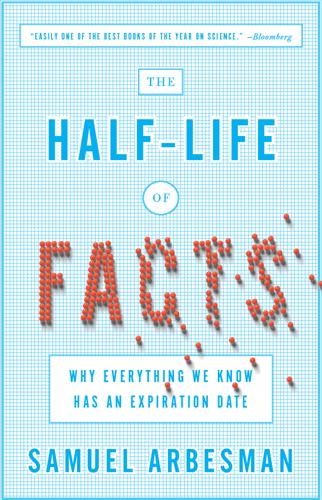
The Half-Life of Facts: Why Everything We Know Has an Expiration Date
by
Samuel Arbesman
Published 31 Aug 2012
Note that the distance traveled is on a logarithmic axis, meaning that the distances capable of being traveled increases exponentially over time. The thick black line shows the general exponential trend. Data from Grübler, Technology and Global Change (Cambridge University Press, 2003). These transportation speeds have clear implications for how the world around us changes. Cesare Marchetti, an Italian physicist and systems analyst, examined the city of Berlin in great detail and showed that the city has grown in tandem with technological developments. From its early dimensions, when it was hemmed in by the limits of pedestrians and coaches, to later times, when its size ballooned alongside the electric trams and subways, Berlin’s general shape was dictated by the development of ever more powerful technologies.

Underwater: How Our American Dream of Homeownership Became a Nightmare
by
Ryan Dezember
Published 13 Jul 2020
Hagerty, “Countrywide Pulls on the Reins,” Wall Street Journal, August 8, 2006. The agency created by Congress amid the Great Depression Federal Deposit Insurance Corporation, “In Focus This Quarter: The U.S. Consumer Sector,” December 7, 2004. In doing so, they were bucking thousands of years of habit Cesare Marchetti, “Anthropological Invariants in Travel Behavior,” Technological Forecasting and Social Change 47 (1994): 75–88. 9. WANNA BUY A BRIDGE? Bob Shallow wound up selling $173.3 million Kathy Jumper, “Bob Shallow Is RE/MAX’s Top Agent on Earth,” Press-Register, March 26, 2006. He was making more than $20,000 a day Ibid.

Postcapitalism: A Guide to Our Future
by
Paul Mason
Published 29 Jul 2015
In fact, using the IMF’s definition of recession (six months during which global growth dips below 3 per cent), they calculate that, while there were no recessions for the period 1945–73, there have been six recessions since 1973. They are confident that the Kondratieff wave is present in world GDP figures after 1870, and observable in Western economies before that. There is more evidence for the existence of long cycles in the work of Cesare Marchetti, an Italian physicist who analysed historical data on energy consumption and infrastructure projects. The result, he concluded in 1986, ‘very clearly reveals cyclic or pulsed behaviour’ in many areas of economic life, with cycles lasting roughly fifty-five years.21 Marchetti rejects the idea that these are waves, or primarily economic – preferring to call them long-term ‘pulses’ in social behaviour.

The Rational Optimist: How Prosperity Evolves
by
Matt Ridley
Published 17 May 2010
Better kinds of nuclear power will include small, disposable, limited-life nuclear batteries for powering individual towns for limited periods and fast-breeder, pebble-bed, inherent-safe atomic reactors capable of extracting 99 per cent of uranium’s energy, instead of 1 per cent as at present, and generating even smaller quantities of short-lived waste while doing so. Modern nuclear reactors are already as different from the inherently unstable, uncontained Chernobyl ones as a jetliner is from a biplane. Perhaps one day fusion will contribute, too, but do not hold your breath. The Italian engineer Cesare Marchetti once drew a graph of human energy use over the past 150 years as it migrated from wood to coal to oil to gas. In each case, the ratio of carbon atoms to hydrogen atoms fell, from ten in wood to one in coal to a half in oil to a quarter in methane. In 1800 carbon atoms did 90 per cent of combustion, but by 1935 it was 50:50 carbon and hydrogen, and by 2100, 90 per cent of combustion may come from hydrogen – made with nuclear electricity, most probably.